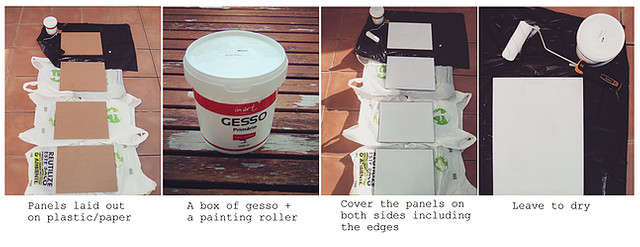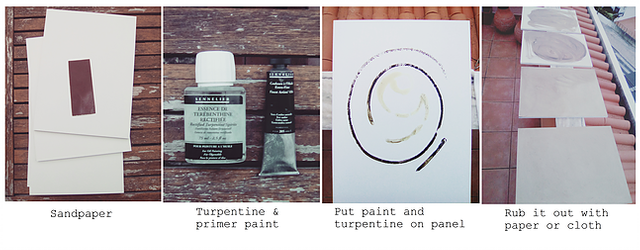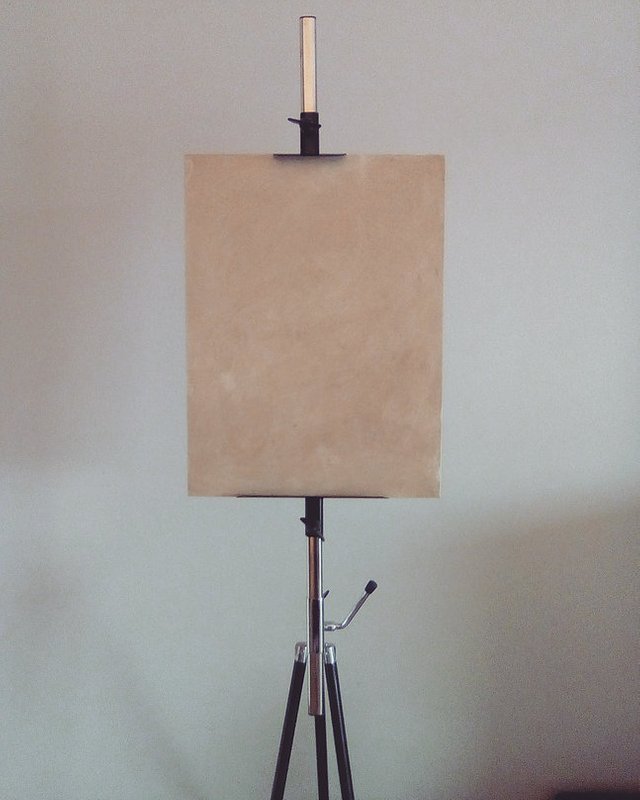How to make panels for paintings! An easy and affordable way. DIY
As a painter I am always looking for practical, safe and affordable solutions to create my paintings. One of the most if not THE most important stage in creating a painting is the very first; choosing and creating the painting support. Are you going to work on a canvas or a panel? Are you going to buy ready made products or are you going to make them yourself?
During my first years of painting I always used to buy readymade canvases. The number one reason being, I didn't know it was a lot cheaper and quite easy to do it yourself! It was the same case with panels, and I have to say I spent a lot of money on products with very low quality.
It wasn't until I started studying in my late teens as an apprentice with a painter in Oslo that I was introduced to the world of craft that comes with the world of painting. I was amazed by how easy and affordable it was to stretch my own canvases and make my own panels! So here you go, this first post is about making panels as that is what I mainly work on these days. A post about stretching canvases will however surely come in the future.
I found painting on board comes with a lot of benefits compared to painting on canvas. That especially goes for smaller scale paintings and studies.
They are sturdier, they are smoother and they are way cheaper.
The characteristics of a good painting panel are:
- rigidity
- moisture resistance
- durability
- a good working surface
Today's artist work on a varsity of materials including cardboard covered with canvas, hardboard, Masonite, MDF board and birch wood.

I mainly work with MDF board which stand for "medium density fiber board". What it is is basically sawdust that is formed using pressure, glue and chemicals. It is easy to cut and is designed to accept paint very well. They are cheap and large boards of MDF is usually available in your regular hard wear store. MDF board is however susceptible to water and bending which is why it is necessary to cover it with a woods sealer before painting on it.
Wood sealers include shellac and gesso. I use gesso. Gesso can be made from scratch or bought in an art or hard wear store. The readymade gesso is usually an acrylic gesso and in my experience they work just fine.
So! You have your panels, you have your gesso, now you need a painting roller! Most painting rollers will do. Some people prefer to cover their panels with a big flat brush, but in my experience a roller will give a smoother more even surface.
The layers of gesso should not be too thick, instead apply at least two or three thinner layers and let them dry for at least 30 minutes in between each layer. Apply the gesso on both sides of the panel as well as the edges around.

Let the panels dry overnight. The next day I usually sand mine down with a fine sandpaper. That's just because I like a smooth surface, some people actually like a more rough surface and deliberately make it so, but that's a matter of taste!
After sanding your panels apply a thin layer of primer color. For this you need a primer pigment and some turpentine. This process I encourage you to do outside because of the smell and toxins from the turpentine. The primer pigment I usually use is raw umber. That is because it is a fast drying, non toxin pigment with a neutral color and temperature. In other words great for priming! I just put a little swirl of color on the panel with some drops of turpentine and rub it out to an even surface with a cloth or some paper.
Then I leave them to dry and that's it!!

Your panel is finished and ready to be painted on!
One thing to remember is to not go too big when you are working with MDF board and to choose at least 0,8 cm in thickness to avoids warping.
All pictures are mine taken the other day during my own panel making session! :)
Very interesting and informative post @mayasky. Thank you.
Thank you @bleujay, my pleasure! :)
Interesting post. Thanks for sharing.
Thank you @unityofmulti!